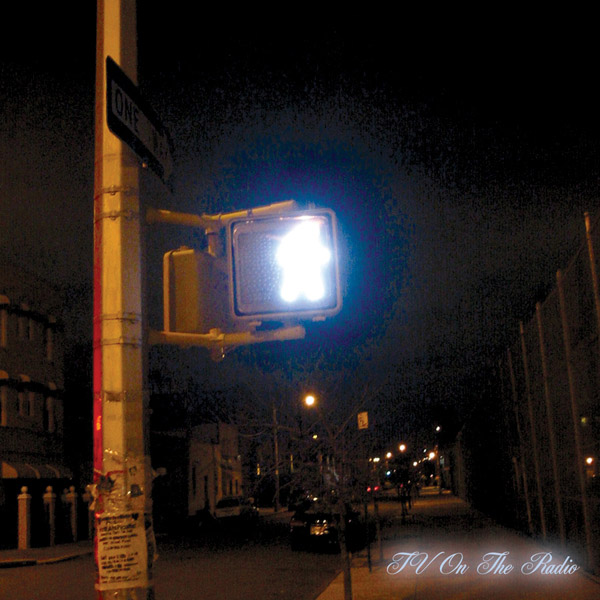Nine Types of Light was an excellent record, and a good sign of things to come from TV on the Radio. Keeping in mind that it was never set in stone if TV would ever release an album again after 2008’s Dear Science, it was a breath of fresh air to hear again from the band in 2011. And, whilst listening to the latest record, one cannot help but reflect on the productive career of the band that has now spanned just over a decade.
Whichever future release you listen to, it all goes back to their original EP, Young Liars, which truly set the mood for what was to come. This release was back when the group hadn’t completely formed, and TV on the Radio mainly consisted of Tunde Adebimpe and David Sitek. A short EP of four original tracks and one cover, it’s surprising that such a huge array of sounds and moods could be captured in such a minimal duration. Young Liars is short, even by EP standards, but it’s the quality rather than the quantity that makes it a truly rewarding listen. Take the opener, “Satellite,” with its propulsive electronic beats, distorted guitars and Tunde’s assertive vocal delivery. Within 30 seconds of the track playing, Tunde managed to demonstrate his full vocal range, captivating a listener and refusing to let go. Between the overlapped, looped vocals, the chaotic synthesisers and the melodic harmonising throughout, “Satellite” impresses from start to finish, and certainly kicked things off on a strong note. As the first official TV on the Radio song – excluding the early demo tracks of OK Calculator – “Satellite” did everything that it needed to in order to make a name for the band.
But everything that followed was just as original. “Staring at the Sun,” the only track on the EP released on an official album later in a slightly edited state, managed to nail that balance between accessibility and experimentalism. Beginning with a foreign-language vocal sample with Tunde humming over the top, and then swelling into an almost viciously brooding guitar, “Staring at the Sun” had more of those incredible vocals, coupled with an addictive chorus. No wonder it was later released as a single. There are an impressive blend of electronics and live instrumentation that made this track successful. Perhaps more importantly, however, is that “Staring at the Sun” created a mood of melancholy that was expanded upon by the third track, “Blind.” This track sounded like it was drenched in swampy fog, with thick sampled beats and a slow tempo throughout. The lyrics were lamentations, sung from the perspective of a longing individual and growing in multi-layered effects. A long song that never dragged, it showed the less upbeat, more contemplative side of TV on the Radio, and also singled them out as modern poets of love songs, which would later become apparent in future releases.
Last of the original songs, “Young Liars” easily justified why the EP was named after it. Soft, programmed percussion, beautiful synthesisers and thought-provoking lyrics made “Young Liars” into a wonderful track. It had a reserved grace about it; less frantic than “Staring at the Sun,” but just as engaging to sing along to. Through the post-rock edged production, placing the fuzzy instruments in the foreground throughout and making each beautiful sound linger for just the right amount of time, it really was one of TV’s best tracks, even to this day. “Young Liars” certainly showed the gorgeous side of TV on the Radio; a trait that they later continued in songs such as “Tonight.” Following “Young Liars” was an inspired cover of The Pixies’ “Mr. Grieves,” a stripped down, doo-wop re-imagining of this much-loved track, and one that in no way offends the original. In fact, it once more showed another side to TV on the Radio as well as openly revealed one of their primary influences.
When Young Liars stops spinning, the only thing left in motion is the mind of the listener. It’s such a diverse disc, one featuring only a few songs but all of them instantly recognisable and of different musical genres. At the time it would have been especially interesting, because fans – of which TV on the Radio would have earned many – would have speculated over what sort of direction the band would have gone in next. And really, all of their subsequent full-length albums have had the same breadth and depth to them. TV on the Radio still make sorrowful songs like “Blind,” and they haven’t shied away from quick-paced, catchy tracks like “Satellite.” Even elements of their cover of “Mr. Grieves” can be seen in future tracks like “A Method,” showing that the band have not lost the sound of their roots. From the beginning of their career, TV on the Radio set out to engage with and challenge a listener, rarely staying in one musical domain for more than a few minutes. Almost ten years later and nothing has changed; they are still more than happy to explore, and as intrepid musical adventurers ourselves, we can consider ourselves lucky that we are being invited along with them.

